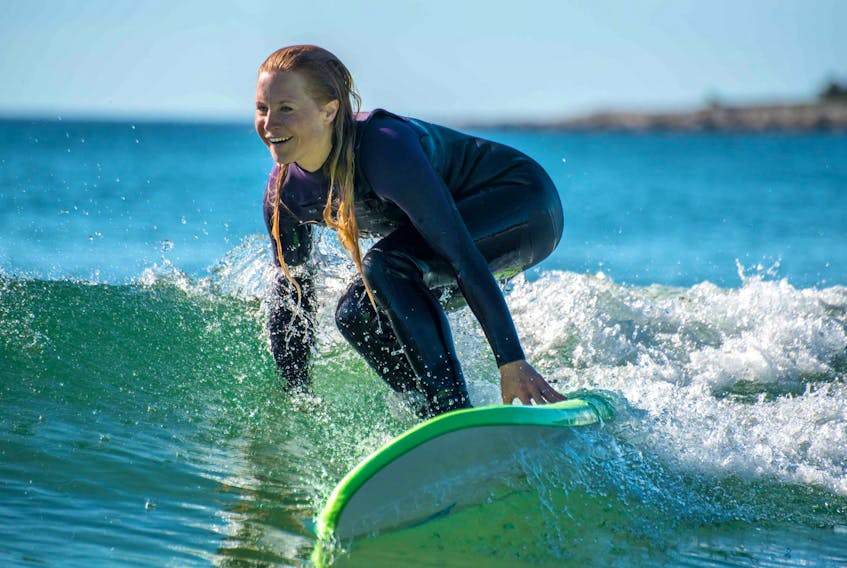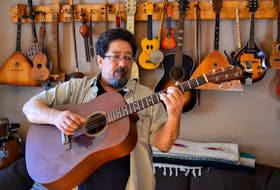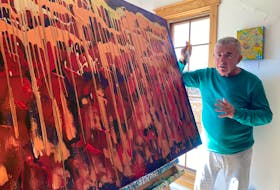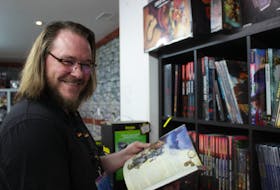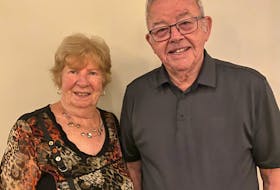“The first time getting up on the board was euphoric, and it left me craving more,” says Kentville, N.S. resident Shannon Stevens about his first time catching a wave while surfing over two decades ago.
And, he’s been hooked ever since.
When asked what it feels like to ride the waves, international surfing star Logan Landry, originally from Berwick, N.S., says it’s a feeling only a surfer would know.
Nico Manos, owner of Nova Scotia’s East Coast Surf School, agrees.
“Billabong ran this corny ad a few years ago, with the slogan, ‘Only a surfer knows the feeling’,” says Manos. “It actually hit the nail on the head though; it's a tough thing to describe.”
The best thing, says Manos, is just to get out there and try it for yourself.
All ages activity

According to Manos, there is no perfect age to start surfing, although he says the sooner you start, the better off you will be.
“I've never heard anyone say that they wished they started later in life,” says Manos.
At the East Coast Surf School, Manos has taught children as young as five years old to surf, although they mostly teach children in the eight- to 12-year range and they usually catch on really quickly, frequently standing up on the first few waves they see, he says.
“The oldest we've taught is a 78-year-old. So, if you're 79, we'd love to meet you,” jokes Manos.
When it comes to swimming ability, Manos says surfers should be able to swim the length of a pool at minimum. If you're not as confident in your swimming ability as you would hope, Manos says you can stay in waist- to chest-deep water and still have a really good time.
Part of the surfing lessons also focuses on hand signals and communication with the lifeguards. If you get a cramp, for example, you can just sit on your board and signal to one of the instructors or a lifeguard for help, says Manos.
As for equipment, Manos says surfers need a proper wet suit to keep warm and an appropriately-sized board for the wave size. Stevens recommends renting all the equipment at first, as purchasing your own can be expensive, and you want to make sure you enjoy it. Equipment can be rented from places like the East Coast Surf School, which can be found right at the beach.
Surfin' a wave

When it comes to finding a surfing location, Landry says many people don’t automatically think of Nova Scotia, but he says you can actually surf the province’s entire coastline.
“There are good waves here and not that many surfers compared to everywhere else in the world,” says Landry.
Manos says Nova Scotia’s Lawrencetown Beach is without a doubt the best beach to surf.
“The same swell will produce different size waves with different intensity on different parts of the beach,” he explains. “A perfect beginner wave could peel off one sandbar and an intermediate wave off the next sandbar.”
Lawrencetown, adds Manos, is definitely the most consistent surfing beach on the entire eastern seaboard, and surfers are guaranteed to get waves when they go there, while a lot of the other beaches are quite fickle. Martinique is really consistent too, says Manos, and a great spot for kids or nervous surfers.
Stevens says his favourite Nova Scotia surfing spots, besides Lawrencetown Beach, include Cow Bay or White Point Beach.
Donna Hatt, marketing manager for the White Point Beach Resort, agrees. In fact, she says, you can go surfing at White Point year-round, and people come from all over the world to do so.
“We’re champions and advocates of inviting folks to give surfing a try, as it is the quintessential way to fully experience Canada’s Ocean Playground,” says Hatt, who notes that beginner surfing lessons are available at White Point Beach Resort through Rossignol Surf Shop by summer and East Coast Surf School in the winter.
Get a lesson

The best advice for someone who wants to try surfing, says Landry, is to contact a surf school for a lesson. There, you can learn the basics of surfing along with some safety tips.
“This is key,” says Landry. “I have seen so many people trying to learn by themselves and get hurt.”
Taking a lesson is easy and affordable, says Manos. There are a few simple pieces of advice that will keep you safe and potentially put you weeks ahead of where you would be had you just rented the equipment and tried on your own. Through a lesson, new surfers get all of the information needed for success and also get shown the easiest sections of the beach to learn on, as they change day-to-day.
If you know you are going to try surfing, Manos suggests calling at least a day in advance so instructors can suggest the optimal time for your experience level.
“Please don't be intimidated to call as a beginner,” says Manos. “Our staff are really accomplished surfers but 90 per cent of our time is spent with folks that have never surfed before.”
Instructors do their best to create an atmosphere that's not intimidating, as a big part of the instructors’ enjoyment comes from re-living those first-surf butterflies and the stoke of a first ride.
When you do start surfing, Stevens says to be prepared for some frustration, and that it may take several visits to the beach before you catch your first wave.
“You have to have a ton of patience waiting for the waves, so be happy with baby steps,” says Stevens.
Building a board
And once the surfing bug has bitten, it might lead to further hobbies. Stevens, for example, started building his own boards with foam, fibreglass and resin, so he could try different-styled and sized boards. Every board rides differently, he says.
“This has become a hobby of its own,” says Stevens, who has made well over 10 boards using a style he developed, first learning from a friend, then books and YouTube.
“I can't promise that everyone will love surfing or that they will get the feeling that I do when I surf,” says Manos. “But your consolation is hanging at the beach, floating in the ocean, laughing at your friends and putting sun on your cheeks.”
Learn more at www.ecsurfschool.com and www.whitepoint.com
RELATED: Surfer, cyclist records adventures through Nova Scotia

